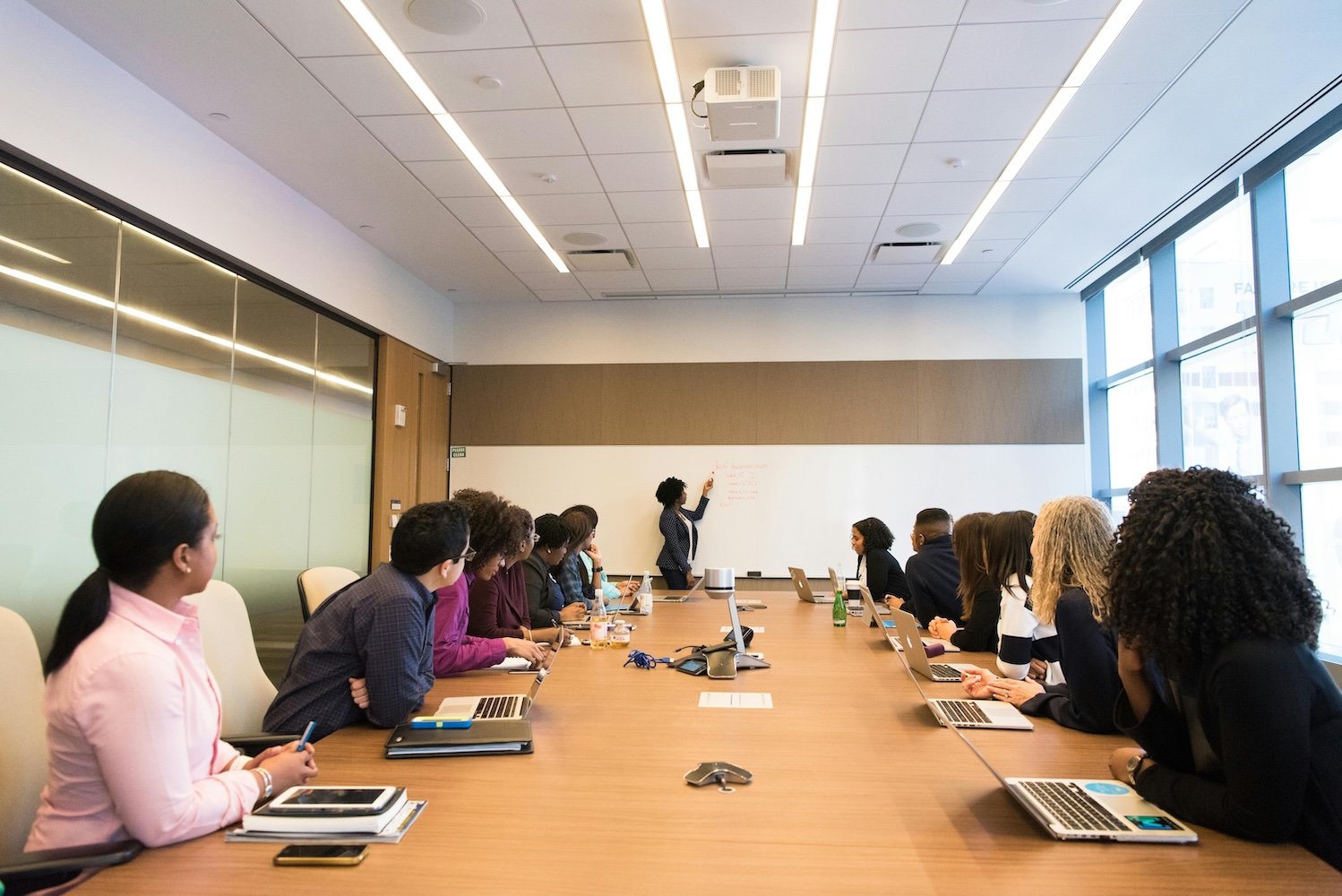Employee recognition is not just about handing out awards or certificates during a quarterly review; it’s about embedding appreciation into your company’s daily operations and culture through the successful use of an employee recognition program.
While more organizations recognize the benefits of employee recognition, only 52% of employees say their company has an employee recognition program. While it might seem unnecessary to employ and maintain a program dedicated to recognition, the fact is that employees feel 32% more valued in companies with a program.
Therefore, an employee recognition program is necessary if a company wants to harness the full potential of its recognition efforts. So whether you are just starting or looking to improve your program, this article will guide you, step by step, through how to create an employee recognition program.
What is an Employee Recognition Program?
An employee recognition program is a structured approach to acknowledging and celebrating employees’ efforts, achievements, and contributions to the organization.
Typically housed in employee recognition software, the program has clear goals, guidelines, and systems for leaders and peers to express their gratitude for one another. These programs can utilize points, employee rewards, or praise among colleagues to motivate and reinforce positive behaviors.
Types of Recognition Programs
When building a recognition program, you must understand the different types of recognition you can implement. Understanding the ways you can appreciate employees will allow you to create a program that meets your organization’s needs.
The types of recognition include:
Peer-to-Peer Recognition: A social recognition where employees recognize their coworkers for their contributions, teamwork, or support. Peer recognition fosters collaboration and camaraderie.
Manager-to-Employee Recognition: Managers acknowledge and reward employees for their hard work, project success, or personal achievements. This reinforces a strong manager-employee relationship and helps to identify top performers.
Public Recognition: Celebrating accomplishments in a company-wide meeting or newsletter. Public acknowledgment offers greater visibility for the recognized employee and creates a ripple effect of positivity.
Private Recognition: This is a more private acknowledgment given one-on-one. It can be a handwritten note, a meeting with a manager, or an email. It’s more intimate and can feel more personal.
Performance-Based Recognition: This involves rewarding employees based on their work performance, hitting targets, or achieving milestones.
Anniversary or Milestone Recognition: This involves celebrating the important moments in an employee’s life. These milestones can include work anniversaries, promotions, birthdays, and more.
Incentive-Based Recognition: Offering non-monetary employee rewards for achieving goals, such as extra time off, certificates, or other perks that align with your company’s values.

How to Create a Strong Employee Recognition Program
Building a robust employee recognition program requires careful planning and consideration of your organization’s needs. Here’s a detailed step-by-step guide to help you create a successful and sustainable program.
1. Understand Company Culture and Employee Needs
Before designing your program, it’s crucial to understand the existing culture and what employees value in terms of recognition. Conduct surveys, host focus groups, or have one-on-one conversations to gauge employees’ appreciation preferences.
Here are some questions to answer so you can better understand organizational needs:
- What motivates your employees? Are they more driven by personal achievement or teamwork?
- What types of recognition do they find meaningful?
- Is your workplace formal or casual?
- How often do employees hope to get recognition?
Gathering this information will help you design a program that resonates with your employees and fits the existing work environment.
2. Set Clear Goals for the Program
Once you’ve gathered all of the necessary information, it is time to begin making a plan. The crucial first step of this process is to define what you want to achieve with your recognition program. Your goals and objectives will guide the design and implementation of the program.
When setting your objectives, consider developing a program that aligns with your company’s values and longer-term organizational goals. Furthermore, you can aim your program to target specific employee improvement needs.
Some common objectives a company might pursue are:
- Increasing employee engagement: Employees who feel recognized are more likely to be engaged and contribute positively to the workplace.
- Improving employee retention: Employees who feel valued are less likely to leave the company, reducing turnover costs.
- Reinforcing company values: By recognizing behaviors that align with your company’s core values, you encourage others to follow suit.
- Encouraging specific behaviors: Whether it’s teamwork, innovation, or customer service excellence, you can steer employee behavior by recognizing and rewarding it.
- Improving job satisfaction: Focusing on the good that employees do will help employees feel connected to work.
3. Choose Recognition Methods that Fit
Your recognition methods should be diverse enough to appeal to all employees but simple enough for them to easily implement into their daily workload.
The best programs use a mix of methods that are manageable to participate in and manage. This will create an inclusive and well-rounded program in which everyone, from introverts to extroverts, can feel comfortable being acknowledged.
Your program can use a mix of the following methods:
Daily or Weekly Recognition: Implement a simple system for quick and frequent recognition, such as employee shout-outs during meetings, a recognition wall, or a virtual recognition board.
Monthly or Quarterly Awards: Consider creating structured recognition opportunities, like employee of the month or other employee awards.
Celebrations: These could be part of a larger company event, end-of-year celebrations, or simple celebrations for employee milestones.
Reward System: Utilizing a point system where employees can receive points recognizing their hard work to redeem for physical employee reward options.
4. Develop Simple, Flexible Guidelines
The guidelines for your program should be clear but flexible enough to allow organic recognition. Create a structure around what types of achievements or behaviors should be recognized and what forms of recognition are available. These guidelines help set expectations without overwhelming employees with rules.
Here are some questions you can use to build your guidelines:
- Who can give recognition? Can everyone participate, or is it limited to managers?
- What actions are worthy of recognition?
- How often should recognition happen?
- How will you ensure everyone is recognized?
5. Decide on a Budget
While a recognition program doesn’t need to be expensive, it will require some money. While working with the higher leadership, decide how much money you can invest in recognition software and reward systems.
Knowing how much you can allocate to your efforts will help guide you on what you can and cannot use. Remember that effective employee appreciation is about sincere acknowledgment, not about how much money you can spend. So, even if your budget is small, you can do a lot.
6. Choose a Platform for Recognition
Next, choose how you will facilitate the recognition process. Whether a digital tool or a manual tracking system, your recognition program needs a platform to centralize and document acknowledgments.
Consider using employee recognition software specifically designed to streamline recognition efforts, track participation, and make it easier for employees and managers to give and receive recognition. An employee recognition platform often includes features like real-time notifications, peer-to-peer recognition capabilities, and progress tracking.
If your organization is smaller or more casual, a physical bulletin board or email system can work just as well. The key is ensuring the platform is accessible and simple to use.
7. Involve Leadership in the Process
Leadership involvement is crucial for the success of any recognition program. Employees are more likely to take the program seriously if leadership actively participates. Leadership can set the tone by publicly recognizing employees, providing input into the program’s design, and setting an example for others to follow.
Make sure your leadership team understands the value of recognition and is committed to its success. Their endorsement will provide credibility and encourage employees to engage.
8. Communicate the Program to Employees
Communication is key to launching your recognition program effectively. Once the program is developed, it’s important to introduce it clearly to employees. Not only should they be trained on how to implement and participate in the program, but they should also know the why. When they understand the importance, they will be more likely to participate.
Ensure they understand how the program works, what recognition options are available, when it’s appropriate to give recognition, and why the program exists.
You can communicate program details via company meetings, emails, and visual reminders (like posters or intranet banners) to ensure all employees are aware of the program.
9. Start the Program
Once everything has been created and communicated, it is time to get it started. Whether you want to host a launch party or a seamless start, find a way to hype up the beginning of the program. However you decide to start the program, be an example by being the first to use the new program.
For example, if the organization has an employee shout-out board, be the first to make a post. Your example can set expectations while also inspiring others to join in.
10. Evaluate, Gather Feedback, and Adjust
A recognition program isn’t a set-it-and-forget-it initiative. You should regularly evaluate its success and gather feedback from employees to determine what’s working and what’s not. Consider conducting surveys to understand how employees feel about the program.
You can evaluate success by tracking participation, examining employee engagement metrics, and measuring whether or not the company is improving in meeting the program’s goals. As you receive feedback and data, be sure to make adjustments as necessary to keep the program fresh, relevant, and impactful.
Read More: How to Roll Out an Employee Recognition Program

How to Pitch an Employee Recognition Program to Leadership
Getting leadership on board with an employee recognition program can be a challenge, especially when there are competing priorities and budgets to consider. However, with the right approach, you can make a compelling case for the value of a recognition program.
Here is how you can pitch your program to leadership to get them on board.
1. Present Data-Driven Benefits
Executives and managers respond well to data, so make sure to come prepared with statistics that show the link between recognition and business outcomes. Highlight research that demonstrates:
- Recognition boosts employee engagement and satisfaction.
- Engaged employees are more productive, leading to higher profitability.
- Recognition programs reduce employee turnover, saving on recruitment and training costs.
- Include case studies from companies that have successfully implemented recognition programs and seen measurable benefits.
2. Align with Business Goals
Make the connection between employee recognition and the company’s specific goals. Point out that through employee appreciation, the company can reinforce behaviors that align with the goals and values of the business.
For example, if the company is focused on innovation, explain how recognizing employees for creative solutions can foster a culture of continuous improvement; if customer satisfaction is a priority, show how recognizing employees for excellent service can lead to better customer experiences.
By showing how recognition aligns with broader business objectives, you make the program a strategic priority rather than just a “nice-to-have” initiative.
3. Propose a Pilot Program
If leadership is hesitant to commit to a full-scale program, suggest starting with a smaller pilot version of the recognition program. This allows the company to test the waters and see how it impacts employee engagement and performance. Once the program demonstrates success, you can scale it up.
Signs That You’ve Created an Effective Employee Recognition Program
Once your program is up and running, how can you tell if it’s working? If you are taking advantage of recognition software, many programs provide engagement metrics that can help you see where your program is successful. However, that is not the only way. Below are some signs that your program is on the right track:
Increased Employee Engagement: Employees who feel valued are more likely to be motivated, productive, and committed to their work. If you notice a rise in engagement metrics, such as participation in company activities, enthusiasm in daily tasks, or positive feedback in surveys, it’s a good sign that your recognition program is effective.
Higher Retention Rates: A successful employee recognition program helps reduce turnover by fostering a sense of loyalty and satisfaction. Employees who feel valued are less likely to leave the company. If your retention rates improve after implementing the program, you can credit the positive impact of employee recognition.
Positive Changes in Company Culture: Recognition programs can transform your company culture over time. Look for signs of increased collaboration, stronger relationships between employees and managers, and a general atmosphere of positivity. Employees may also start recognizing each other more organically, which indicates that appreciation is becoming ingrained in daily operations.
Greater Employee Participation in the Program: An effective program will see active participation from employees at all levels. If you notice more frequent peer-to-peer recognition, manager recognition, and overall enthusiasm around the program, it means your team is embracing the initiative. Regular participation shows that employees are engaged and find the program valuable.
Recognition is Linked to Specific Behaviors: When recognition is linked to specific behaviors, it is more meaningful and effective than when employees give generic praise. If you see recognition is specific, the program will be more likely to reinforce the desired actions for the objectives outlined in the beginning.
Tangible Business Outcomes: Beyond employee metrics, a well-designed recognition program should also have positive effects on business outcomes. These might include improved productivity and performance, higher customer satisfaction ratings, increased innovation or creativity in problem-solving, or lower absenteeism rates.
Furthermore, review the objectives you outlined when creating the program and evaluate whether you are seeing those goals realized. If so, your program is doing exactly what it was created to do and, therefore, is effective.

Creating an Employee Recognition Program with Kudoboard
Creating, implementing, and managing an employee recognition program can be overwhelming. However, you don’t need to do it alone. When you’re ready to launch your employee recognition program, consider using a recognition platform like Kudoboard to help manage and facilitate the process.
Kudoboard is an online platform that allows teams to collaborate on group recognition boards. These boards can be used for special occasions like anniversaries, birthdays, or just to celebrate a job well done. Kudoboard offers features such as group cards, photo boards, and virtual celebrations, all of which can help make recognition fun and engaging for employees.
Additionally, Kudoboard can integrate with other recognition programs or stand alone, depending on your needs. With options for customization and ease of use, it’s a versatile tool that simplifies employee appreciation efforts.
Wrapping Up
Creating an employee recognition program is one of the best ways to boost employee morale, increase engagement, and retain top talent. By following a thoughtful, step-by-step approach, you can develop a program that fits your company culture, meets employee needs, and drives real results.
Remember, recognition doesn’t have to be expensive or time-consuming. What matters most is consistency and sincerity. With the right program in place, you can create a culture where employees feel valued, supported, and motivated to contribute their best work.




